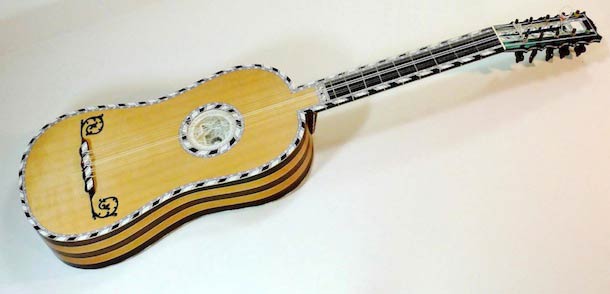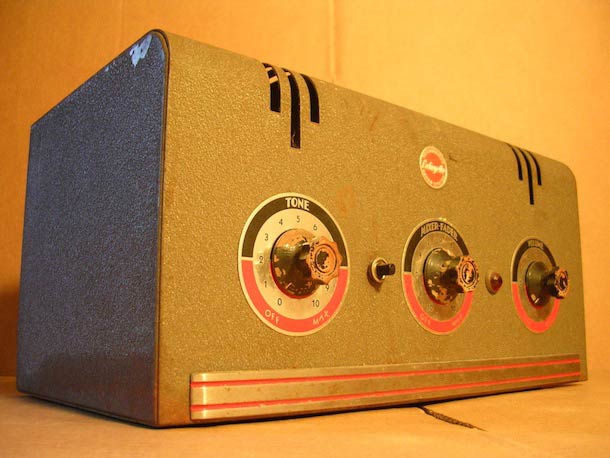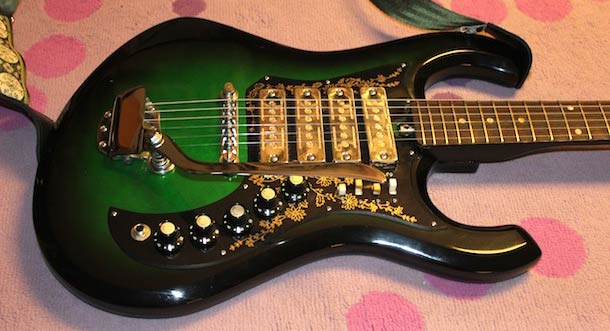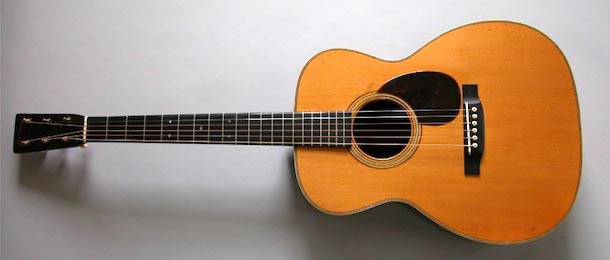The ten principles of guitar design, Part 7, Long Lasting
This is Part 7 of a 10 part series, applying Dieter Rams’ “10 Principles” to guitar design. Just as we did in previous installments, we should understand that these principles were just one designer’s opinion as to how to evaluate their work, and that they’re presented in their original order assuming that there is no particular importance to that order.
Principle #7:
Good design is Long Lasting
“It avoids being fashionable and therefore never appears antiquated. Unlike fashionable design, it lasts many years – even in today’s throwaway society.”
This is simply the test of time, and I’m sure you can think of examples of guitars that fit our lifestyles as well as they fit others 50 years ago. I don’t even have to give you the obvious ones. Surely you can also think of plenty of examples of guitars that look dated, awkward, or simply out of place in a modern setting. There’s just something “right” about a long lasting design, or at least the major design elements within the overall Concept. Instead of simply trotting out the usual suspects, let’s ponder what’s involved in creating an enduring design.
The biggest challenge in evaluating anything against the Test of Time standard is that it takes so long. You can’t just draw something up and declare that it will never been dated or obsolete. The other Principles are criteria that are immediately useful, while this one is subject to review at one or more times in the future.
Fashionable
By their very nature, fashion is something that can take what looks to be timeless now and make it hopelessly outdated next year. It can also come back again as “retro”. There’s the impulse to incorporate fashionable design elements in order to capitalize on their popularity and hopefully turn that work into product revenue. The thought process may be that in the long run, it may turn out to be an enduring design, and that’s great, but then again in the long run we’re all dead. The pressure is to gain acceptance now and pay some bills.
Designing to fit the fashions of the day is nothing new, not even for guitars. The lovely Baroque-era guitar below incorporates numerous decorative and functional appointments that were considered desirable in their day. It also had a sound that fit the period, but would perhaps be out of place today with the possible exceptions of a prog band or a period-specific performance ensemble.

While some would argue that the era of pointy guitars has come and gone, others would say that they still are fashionable and include design elements that have proven to be enduring. The same could be said about mullet haircuts. If a fashion trend has a longer than average life, could we then say that designs incorporating those fashions are long lasting?

You can also sometimes spot a design era by noting other geometric design elements, and by the fonts that are used. The methods of manufacturing can also have an influence on fashion as the fabrication processes can favor particular shapes and assembly. The lovely amp below is not only a predecessor to the “lunchbox” amps that are popular today, but the font choice show it’s age.

Sometimes you can spot a guitar’s era by the hardware it sports. Take for example the fine specimen of a Kimberly below. Maybe it’s just we’ve seen so many guitars from a particular era that feature a set of hardware parts that it instantly dates the guitar for us. The floral pickguard motif helps, too. The pickups, knobs, and tremolo definitely don’t look current, but were certainly widely available at the time it was designed and produced. Perhaps future generations of guitar players will be able to date our current designs based on the commonly available hardware components we choose to incorporate.

Long Lasting vs. Timeless
There is a difference between the two. Long lasting doesn’t necessarily mean that it will never look dated. Dieter just says that a good design should last “many years”, not forever. Just how long he doesn’t say, but I’d suggest that the enduring designs have a longer than average run compared to similar products. Also, the applicable time frame for evaluating a classical guitar’s design longevity is going to be much different than that of a synth.
So, the question is: how do you design something so that it doesn’t look dated too soon? One possible approach is to design with elements that have been proven to be long lasting or directly address functionality. There are reasons why guitars are designed the way they are, both for sound and for withstanding the tension of the strings. For example, a bent wooden slat has proven itself to be stronger than a straight one of the same thickness, and it’s also proven itself to be visually appealing.
It might also help to take a look at other products that are often cited as having long-lasting or timeless designs. The Vespa scooter comes up frequently in those discussions. Like many long-lasting guitar designs, the core design elements of the Vespa scooter are somewhat constant, but incorporate a variety of refinements applied over time. It still looks like a Vespa, but you can easily see technology improvements and design tweaks, just as you would on any time-tested guitar design.

Using the two examples above, you can easily note the similarities between the two. The basic geometry is relatively close, the sweeping curve under the seat, the configuration of fenders and flares, the operation is pretty much the same, and so on. Some of the differences are based the impact of innovations, new technologies, perhaps changes in environmental Constraints such as government regulations, and perhaps changes in the methods of manufacturing. The design adapts to changes in the Constraints. Other changes could be driven by customer demands, such as a more comfortable seat, disc instead of drum brakes, and internal storage rather than just an external rack.
You may also note that there’s a direct appeal to simplicity in the design decisions in color and geometry. Both examples features a predominantly single color paint, black seats to match the natural black in the tires, and a minimum of chrome. Sure, there are lots of little differences, but both are easily recognized as Vespa vehicles.
Natural material colors and shapes also tend to be long-lasting, as shown in the canoe below. Since I’m not an expert on watercraft, I couldn’t tell you if this was a very old or recent design. To me, it looks like a canoe, albeit a very beautiful one even though there’s nothing flashy about it. The colors and shapes, though, strike me as something that would look perfectly at home on the water today or 100 years ago. The same could be said about a fine Hauser-style classical.

What about Tradition?
We may tend to keep some design elements simply because they’re traditional, not necessarily because they are long lasting. Buyers may have come to expect some of these elements that would otherwise be thought of as simply fashionable. To not include some traditional fashions such as the rosette on a classical may lessen a design’s acceptance in the marketplace. Again, this is a case where the enduring fashion of a traditional appointment may contribute to the longevity of a particular guitar design.
Sound itself can be fashionable and therefore more or less long lasting, although they will continue to hang around because they’re used in performance within a historical context. The Baroque guitar example not only looks dated, but the sounds it produces can also be considered as dated. Current players, and presumably future players, will have expectations as to how a good guitar should sound, feel, and play. There may come a time when technological innovation and other drivers will change our ideals for sound and playability, in which case our current standards will then be dated. It just hasn’t happened yet, as nylon and steel string sounds have themselves to be enduring and adaptable to the music of our times. Like the Vespa, the major design elements in an OM-style steel string are held relatively constant while numerous refinements can be incorporated over time.

The Throwaway Society
I wish Dieter would have gone on a bit more about exactly what he meant by the phrase “throwaway society”. I get the sense, though, that he was giving us a commentary on how quick we are to dispose of not only products but ideas for whatever the flavor of the day happens to be. It’s easier to come up with an enduring design when there are relatively few alternatives to it and they aren’t as easy to come by. When the consumer has a wealth of choices and has to give up relatively less to acquire products, you really have to get things right to come up with a long lasting design. Or get really, really lucky.
Constraints can make it much harder to come up with enduring designs as well. You have to work with what’s available and have it sell through. I’m sure there’s also some pressure to take advantage of a current trend, fashion, or fad with the assumption that it’s guaranteed to look dated when the trend passes. Some would argue that there may be a degree of Planned Obsolescence built into some design efforts, too.
In this Principle, Mr. Rams was clearly talking about the longevity of designs and not the products themselves. However, designers have to consider the materials we’re going to be using, their longevity, and also their disposal. The nature of the instruments and traditional materials will lead to eventual failure of the instrument, and new materials can extend a design’s longevity by simply making the produced instruments last longer. The instruments made using less durable materials would then be less desirable, less fashionable, and their designs dated assuming that the sounds are comparable. As it is, most current guitars are destined for disposal because of the lifespan of the materials, and the economics of restoration will greatly favor more durable designs. Sadly, we can already see this with pianos, designed to last maybe 70 or 80 years, and eventually require repair work that is typically more than the value of the instrument.


One thought on “The ten principles of guitar design, Part 7, Long Lasting”